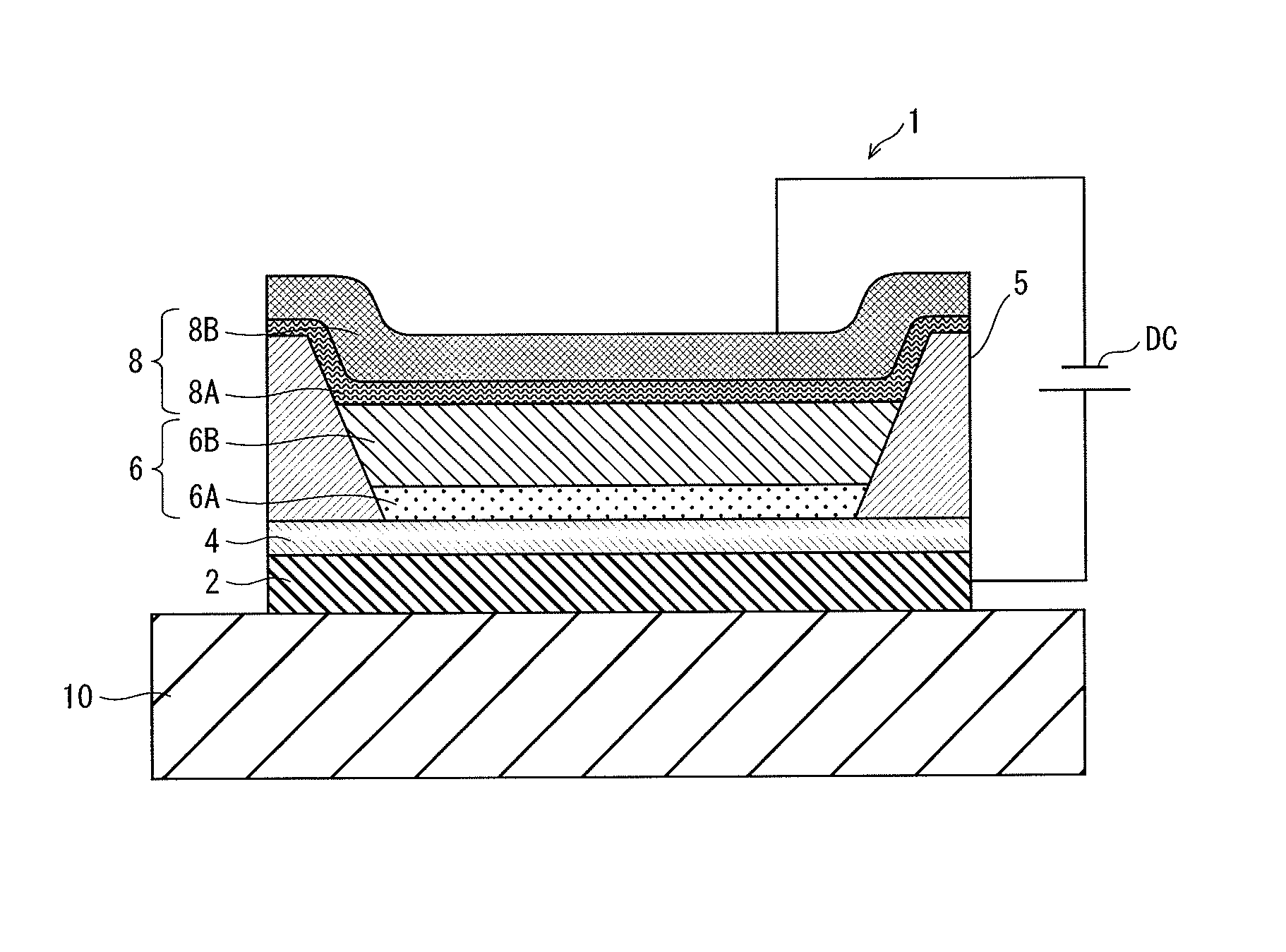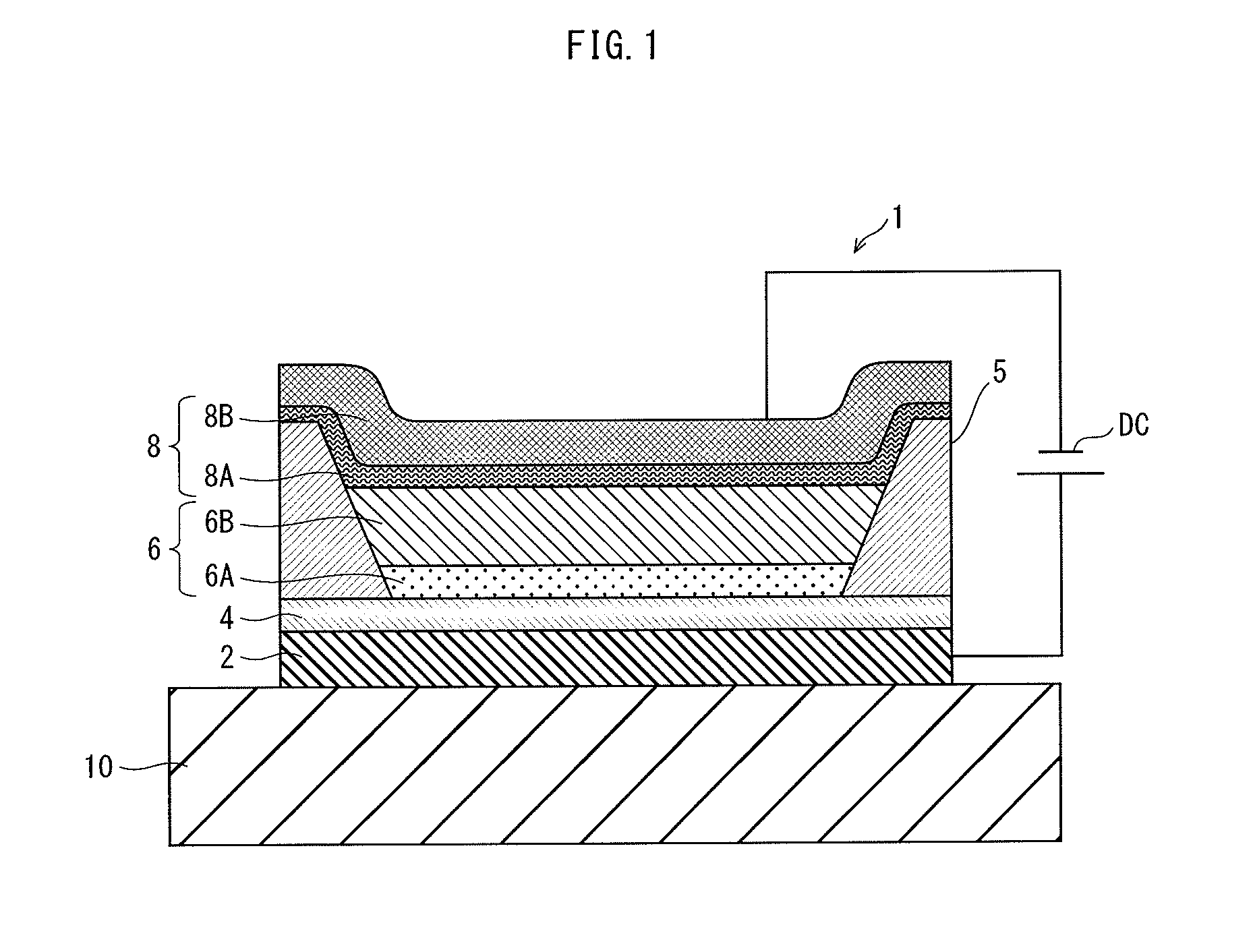Organic EL element
a light-emitting element and organic technology, applied in the field of organic electricfield light-emitting elements, can solve the problems of increasing the difficulty increasing the difficulty of application, and increasing the difficulty of maintaining the precision of mask position adjustment, so as to reduce the barrier of hole injection, high hole injection efficiency, and low voltage
- Summary
- Abstract
- Description
- Claims
- Application Information
AI Technical Summary
Benefits of technology
Problems solved by technology
Method used
Image
Examples
embodiment 1
(Structure of Organic EL Element)
[0113]FIG. 1 is a schematic cross-sectional view illustrating the structure of an organic EL element 1 pertaining to Embodiment 1.
[0114]The organic EL element 1 is an application-type organic EL element, which is characterized in that a functional layer is applied by a wet process in the manufacturing thereof. The organic EL element 1 includes: a hole injection layer 4; various functional layers (a buffer layer 6A and a light-emitting layer 6B, in this case); and a pair of electrodes composed of an anode 2 and a cathode 8. The hole injection layer 4 and the functional layers are disposed one on top of the other, and are disposed between the pair of electrodes. Each of the functional layers contains functional material having a predetermined function.
[0115]More specifically, the organic EL element 1 includes, as illustrated in FIG. 1, the anode 2, the hole injection layer 4, the buffer layer 6A, the light-emitting layer 6B, and the cathode 8 (composed...
embodiment 2
1C>
[0305]FIG. 25A is a schematic cross-sectional view illustrating the structure of an organic EL element 1C according to the present embodiment. FIG. 25B is a partially enlarged view illustrating the vicinity of a hole injection layer 4A.
[0306]The organic EL element 1C is for example an applying-type organic EL element, which is characterized in that a functional layer is applied by a wet process in the manufacturing thereof. The organic EL element 1 includes: a hole injection layer 4A; various functional layers; and a pair of electrodes composed of an anode 2 and a cathode 8D. The hole injection layer 4A and the functional layers are disposed one on top of the other, and are disposed between the pair of electrodes. Each of the functional layers contains functional material having a predetermined function.
[0307]More specifically, the organic EL element 1C includes the anode 2, an ITO layer 3, the hole injection layer 4A, a buffer layer 6A, a light-emitting layer 6B, an electron inj...
PUM
 Login to View More
Login to View More Abstract
Description
Claims
Application Information
 Login to View More
Login to View More - R&D
- Intellectual Property
- Life Sciences
- Materials
- Tech Scout
- Unparalleled Data Quality
- Higher Quality Content
- 60% Fewer Hallucinations
Browse by: Latest US Patents, China's latest patents, Technical Efficacy Thesaurus, Application Domain, Technology Topic, Popular Technical Reports.
© 2025 PatSnap. All rights reserved.Legal|Privacy policy|Modern Slavery Act Transparency Statement|Sitemap|About US| Contact US: help@patsnap.com



